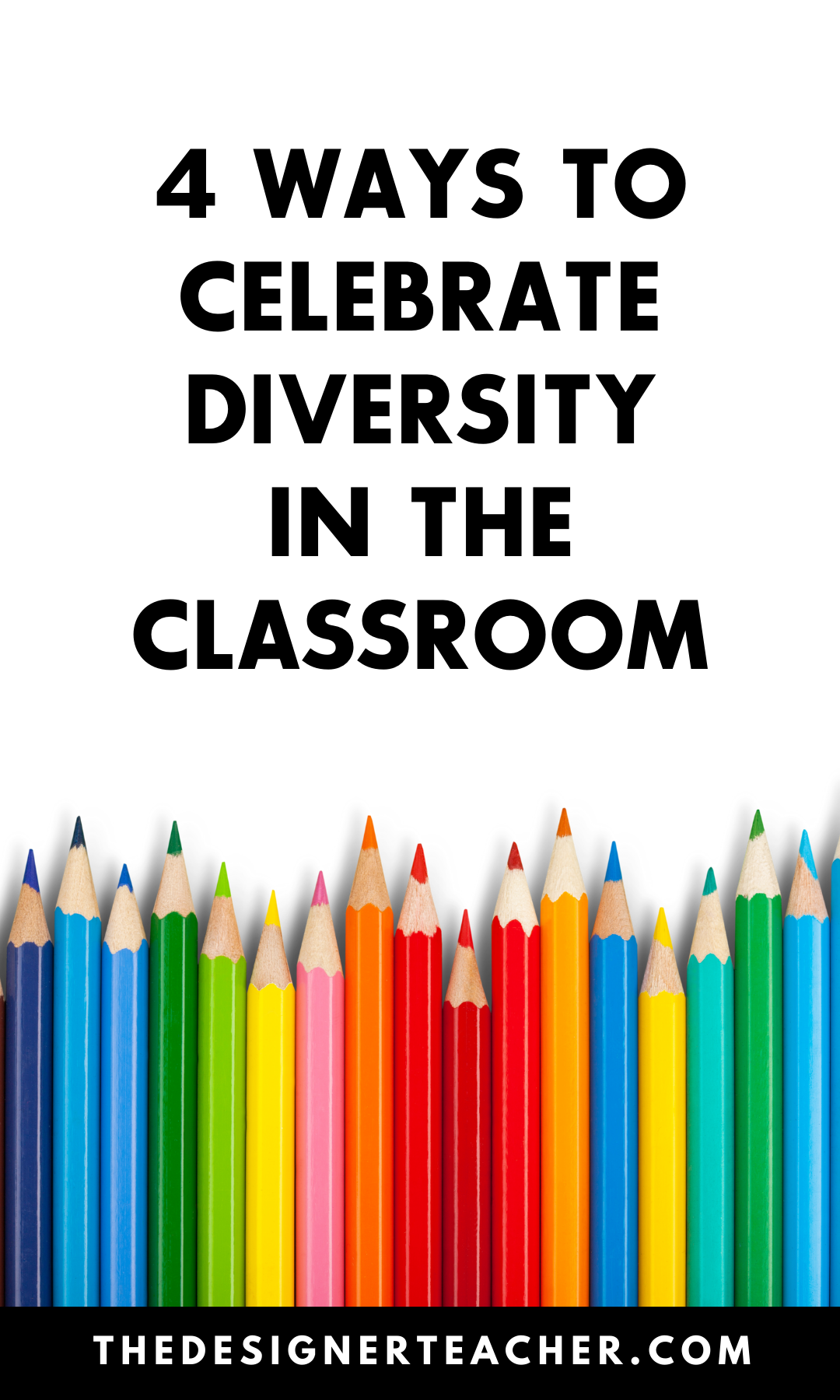4 Ways to Celebrate Diversity in the Classroom
As teachers, we have the ability to help our students understand that diversity is a strength, rather than something to be ignored or grudgingly allowed. Diversity is often associated with skin color and race, and while that’s certainly one aspect of diversity, there’s more to it than that! Differences in religion, cultural identities, languages spoken in the home, and family structure are all part of having a diverse classroom and world.
Children notice these differences whether we acknowledge them or not, so why not celebrate them? Here are four ways to celebrate diversity and promote inclusion in the classroom:
Feature diverse books in your read-alouds and in your classroom library. These can include books about diversity, but it should also mean that various races, cultures, and family structures are represented in the books you’re using to teach throughout the year.
Encourage kids to think about how they’re unique. I hear from some teachers that they don’t have to worry about diversity or equity because all their students are white, or all their students are Christian. Part of celebrating diversity is recognizing that we’re ALL unique, whether you have a multiracial or multicultural classroom or not. Your students might all have the same skin color, but do they all have the same likes and dislikes? The same abilities? Do they all have the same number of siblings or adults living in the home? By recognizing that we’re all different, we can help kids understand that diversity is a positive thing. Crafts like this Rainbow Bulletin Board Kit can help kids reflect on what makes them unique.
Students will share what makes them unique with this cute rainbow craft!
3. Avoid focusing only on oppression. Oppression, from slavery to the Holocaust, is part of history and should absolutely not be left out or whitewashed. But, when students ONLY learn about certain races or identities in the context of oppression, they may begin to have negative associations with those identities. For example, be sure to use Black History Month as a way to celebrate Black history rather than focusing only on slavery and civil rights.
4. Acknowledge holidays of all cultures. Holidays are an accessible and fun way for students to celebrate diversity. Consider teaching about holidays like Dia de los Muertos (Catholic/Mexican), Diwali (Hindu), Kwanzaa (Pan-African/Black American), Yule (Pagan), Purim (Jewish), and Ramadan (Muslim). If you have students who celebrate these holidays, encourage them or their families to share with the class, though of course they shouldn’t be pressured to do so if they’re not comfortable.
Let’s celebrate the diversity in our classrooms and our world!
No time to read now?



